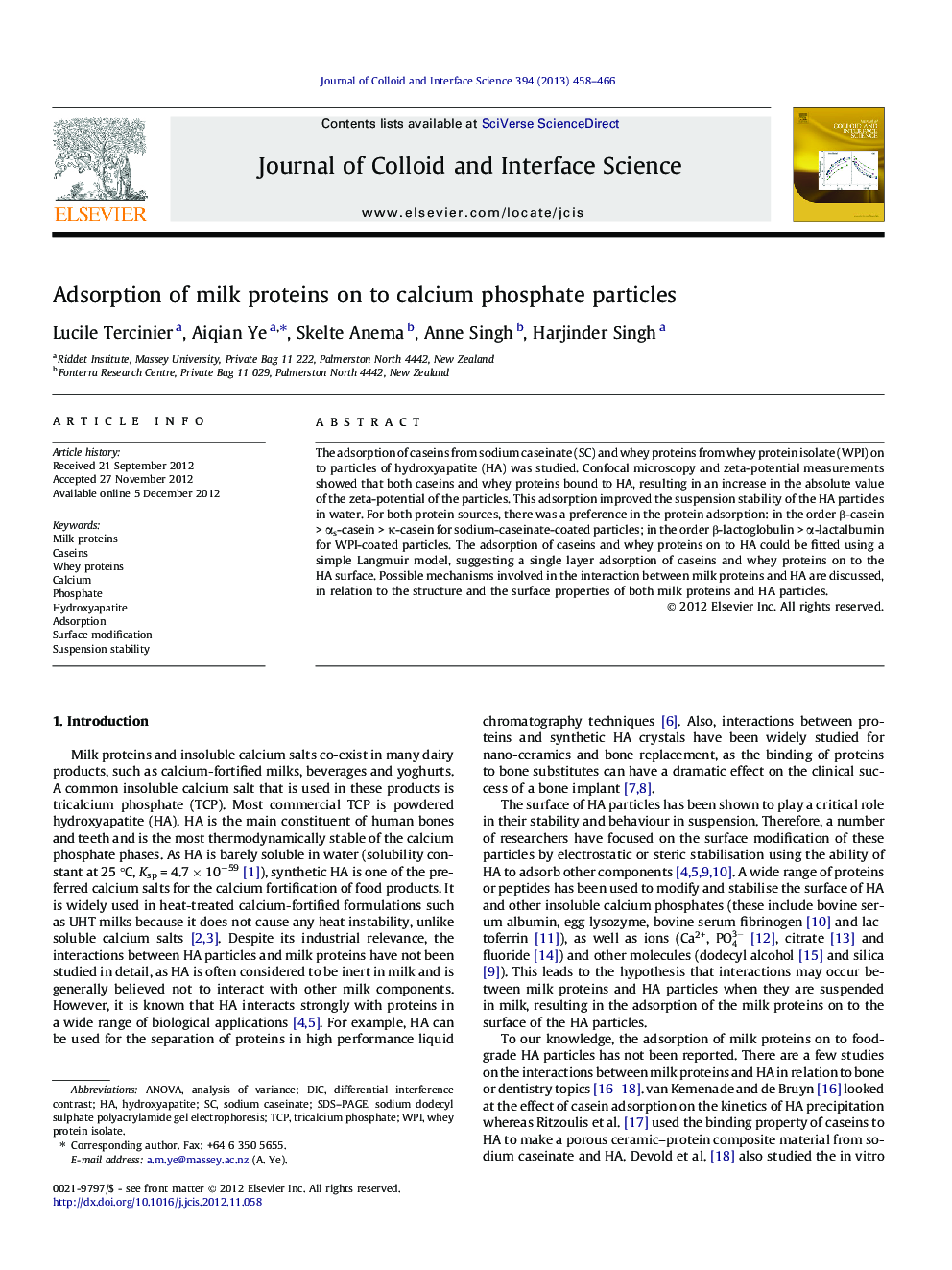| Article ID | Journal | Published Year | Pages | File Type |
|---|---|---|---|---|
| 607795 | Journal of Colloid and Interface Science | 2013 | 9 Pages |
The adsorption of caseins from sodium caseinate (SC) and whey proteins from whey protein isolate (WPI) on to particles of hydroxyapatite (HA) was studied. Confocal microscopy and zeta-potential measurements showed that both caseins and whey proteins bound to HA, resulting in an increase in the absolute value of the zeta-potential of the particles. This adsorption improved the suspension stability of the HA particles in water. For both protein sources, there was a preference in the protein adsorption: in the order β-casein > αs-casein > κ-casein for sodium-caseinate-coated particles; in the order β-lactoglobulin > α-lactalbumin for WPI-coated particles. The adsorption of caseins and whey proteins on to HA could be fitted using a simple Langmuir model, suggesting a single layer adsorption of caseins and whey proteins on to the HA surface. Possible mechanisms involved in the interaction between milk proteins and HA are discussed, in relation to the structure and the surface properties of both milk proteins and HA particles.
Graphical abstractFigure optionsDownload full-size imageDownload high-quality image (178 K)Download as PowerPoint slideHighlights► Milk proteins were adsorbed on to the surface of hydroxyapatite particles. ► The adsorption data were fitted using Langmuir and Langmuir–Freundlich models. ► The adsorption mechanisms relied on electrostatic interactions. ► The maximum surface load was greater for caseins than for whey proteins. ► The suspension stability of the protein-coated particles in water was improved.
